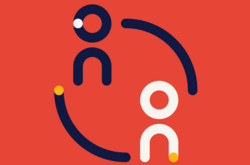introduction
Today’s talent acquisition professionals face an unprecedented labor market where record turnover, hybrid work environments, and evolving candidate expectations are common. As a result, companies of all sizes — from startups to enterprises — are competing with one another for critical talent and skills.
Business leaders are feeling the competitive pressure. For every role filled there are 10 more in the pipeline on average. 73% of recruiters report negotiations for higher salaries are becoming increasingly common among candidates — an increase of more than 20% since 2020.
Despite these challenges, HR leaders are operating in an exceptional recruiting environment, if they have the right talent acquisition strategy and tools supporting their efforts. Above all, they need a guiding approach — a winning talent acquisition (TA) strategy for their present and future recruitment efforts — to yield long-term business results.
A structured TA strategy helps with recruitment efforts across the organization. It can strengthen talent pipelines, help identify, attract, select and engage more qualified candidates and decrease both time-to-hire and overall hiring costs. The right strategy also involves proactive evaluation of new recruitment technologies, processes, and resources driving transformation.
download page as pdfwhat is talent acquisition?
Talent acquisition represents a company’s strategic approach to discovering and sourcing talent to drive operations and key business objectives. Beyond recruitment efforts for individual roles, talent acquisition involves optimizing and redefining parameters for all recruitment processes as business needs, market opportunities, and available resources evolve.
Talent acquisition requires great collaboration with the hiring managers as well as a deep understanding of the job market, tools and resources available to assist in recruitment, and the company’s existing and future talent needs. Because these elements are always changing, HR leaders must regularly reassess their strategy and redetermine where and how they will find the talent they need.
Ultimately, successful talent acquisition provides a roadmap for cultivating relationships with top talent and creates a talent pipeline before a job opens up. Increasingly, talent acquisition is a strategic, executive-level initiative whose purpose is to make hiring easier and more effective at the moments hiring matters most.
talent acquisition vs. recruitment
It’s critical that HR team members understand the difference between talent acquisition and recruitment before they contribute to their company’s overarching TA strategy.
Talent acquisition represents a long-term approach that ensures all of your company’s recruitment efforts drive business results — now and into the future. An investment in talent acquisition is a hedge against future business disruptions and their potential impact on a company’s ability to secure these resources.
Recruitment describes individual efforts to fill specific open roles. Recruitment is the daily responsibility of a hiring manager, an HR professional, or both, and ends when they find a candidate for the open role in question.
As a strategic initiative, talent acquisition strategy directly impacts individual recruitment efforts by:
- defining best practices for individual recruitment efforts
- securing tools, technologies, and resources HR or hiring managers need
- determining the employer brand and employee value propositions recruiters bring to market
- continuously optimizing and redefining these elements to make future recruitment more effective
The importance of TA becomes more apparent as HR leaders begin recruiting for more senior positions. Securing long-term leadership for your organization is difficult. Executives consider companies with clearly defined strategies, values, and benefits made clear to them as part of their TA strategies. This is especially important as competition for senior leaders intensifies.
signs you need to improve your talent acquisition
Competition for top talent has never been more intense. As candidates become more selective and geography becomes less relevant, HR leaders are recognizing the shortcomings in their existing strategies. In fact, only 6% of global HR leaders believe they have best-in-class TA processes in place.

only 6% of global HR leaders believe they have best-in-class TA processes in place.
Every HR leader needs a strategy that is closely tied to the goals of their company but also takes into account emerging trends in the job market, the individual fields of desirable candidates, and their own company’s unique lines of business. Here are four key indicators that a given TA strategy is not properly aligned:
-
1. new hires fail often
A recent global talent management survey found that up to 81% of new hires fail. “Lack of motivation” is a key contributor in these cases, often stemming from job previews that don’t reflect the realities of their roles. Effective job descriptions are inexpensive to implement and can result in significant savings via reduced turnover, increased performance, and better morale.
-
2. your recruiting isn’t future-focused
90% of global chief human resources officers (CHROs) admit that the skillsets on which their recruitment efforts are focused today will be outdated in just a few years. An effective TA strategy aligns with and supports the business strategy, ensuring they have the talent required to meet future objectives.
-
3. internal communication is lacking
TA teams must partner with hiring managers and other business leaders to really understand the roles and required skills, secure new tools for skills-based assessments, and define new approaches to ensure they find the right candidates for open roles.
-
4. your talent is falling behind the technology curve
Information and communication technology (ICT) fields have some of the fastest-changing skillsets in modern business. HR leaders must stay abreast of the changing technology-based skills requirements of their company. They must also identify and secure their own HR technologies that will aid them in future recruitment. Chatbots, for example, can take on a lot of the work involved in early applicant screening and managing large candidate pools.
HR leaders must ensure their methods are aligned with ongoing business goals. Most importantly, they must be aware of shifting trends in relevant job markets and be engaged with the right talent pools to deliver on those needs. Teams that lack confidence in these areas now should give serious thought as to whether their existing TA strategy is up to the task
how to build winning talent acquisition strategies
One employer’s loss of a good candidate is a competing employer’s opportunity, and this has never been truer than today. Recent research reveals that 40% of global employees are considering leaving their current positions within the next six months, where nearly two-thirds of those employees would do so without another job lined up.
The company with a winning talent acquisition strategy is the company that will capture this talent. But successful implementation of your TA strategy — including your employee value proposition (EVP), your employer brand, your talent sourcing capabilities, and other elements — depends on cooperation and buy-in from all levels of management.
Here are four ways you can build a winning talent acquisition strategy within your own organization and reach these objectives with the support of executive teams.
1. create an employee value proposition
In a recent study, 36% of global professionals claim they will take a different job in the near future because “the pandemic enabled them to both reconsider what they wanted and seek out a change.” Incidents like these present an opportunity for talent acquisition leaders, but too many fail to create a highly compelling and relevant employee value proposition that might attract those workers.
An employee value proposition (EVP) is the promise hiring companies make to new employees regarding the experiences, benefits, company values, and growth they can expect upon taking on a new role. The challenge of EVPs is identifying the requirements and desires of the right potential hires and finding the means to fill them. Key components of a successful value proposition include:
- company — its purpose, values, and culture
- leadership — what employees can expect in terms of their relationships with managers
- role — responsibilities, resources, and growth and development opportunities
- rewards — both tangible (e.g., salary, health benefits) and intangible (i.e., flexible work schedules)
HR leaders can start by determining the skills their company needs at present and into the future. Ensuring TA is aligned with their business strategy and company goals is critical to developing a successful EVP. Improving internal communication — between company and HR leaders as well as hiring managers — is critical to this process, especially when creating several different EVPs that align with specific roles and demographics.
Establishing clear processes for developing EVPs ensures you market each role to the best of your ability and avoid “overpromising” the value you can truly provide in each role. EVPs must also align with the broader employer brand, which we will discuss next.
2. build a stronger employer brand
Each employee value proposition (EVP) you develop for specific roles must support your overarching employer brand. Your employer brand is your company’s reputation as a workplace among current employees, active and passive candidates, and other stakeholders. Your employer brand embodies your values, culture, and workplace environment. It offers a promise to candidates which, if fulfilled, can bring high returns on investment to your HR team and your company.
Conversely, a poor reputation can hurt your employer brand. With the ubiquity of online review platforms and social media, your employer brand has never been more public and vulnerable — whether you are shaping that brand yourself or it’s being shaped by others.
Employer brands have real consequences. For example, 86% of U.S. employees would not apply for or continue to work for a company that has a bad reputation with former employees or the general public. Similarly, 65% would likely leave if their employers were being negatively portrayed in the news or on social media because of a crisis or negative business practices.
Fortunately, you can build a top-notch employer brand through both internal- and market-focused learning, creativity, and honesty, as well as proactive advertising that attracts the best-fit talent now and in the future:
- Internally, begin by asking employees about their perception of your employer brand. This will allow you to identify gaps and target problem areas in your future messaging.
- Externally, use market analysis to understand what job seekers want and find attractive when choosing an employer. For example, our Randstad Employer Brand Research explores drivers and motivators among job seekers in 34 different markets.
randstad employer branding center
The Randstad Employer Brand Research is the world’s independent employer brand research that provides localized insights into worker's drivers and motivators in 34 markets. Our yearly research will give you insights into:
- the attributes job seekers value most in a company.
- what makes employees stay with your company, and what deters them.
- the attractiveness of your sector and how it compares to other sectors
Your talent acquisition strategy must span a variety of multiple, ongoing activities to maintain and strengthen your brand. For example, you can start with an online search to learn the existing status of your employer brand as perceived by the market (e.g., on websites that host anonymous employee reviews). You can survey existing employees about their experiences, desires, and perspectives to determine the right messaging with regard to opportunities and the future. Through a deep understanding of your company’s strengths and weaknesses, you can ensure your brand message aligns with the value your company can deliver when new hires do arrive.
3. adopt smarter talent sourcing
HR leaders must explore alternative and more creative forms of talent sourcing to compete in the modern global economy. For example, passive candidates represented 70% of the global workforce in 2018. When attracting active candidates is difficult, passive candidates represent opportunities that, with the right resources, can lead to strong new hires.

70% of the global workforce is made up of passive talent
For example, HR leaders can design recruitment strategies for passive candidates specifically with the support of specialized partners. Their skilled recruiters can find passive jobseekers through their extensive talent network, social media, online review sites, professional organizations, and community events. This can be an exceptional approach when you’re looking for candidates who have in-demand or hard-to-find skills and experience.
Smart talent sourcing also means breaking from traditional thinking in terms of TA. For example, nearly 90% of job postings in technology, healthcare, business management, and other growing industries call for a bachelor’s degree — excluding all high-performing candidates who lack this often-arbitrary benchmark.
HR leaders should also consider how their technology and other resources contribute to smarter talent sourcing long term. For example, research from 2019 found that taking a data-driven approach to sourcing, selecting, and hiring candidates is one of the most effective measures a modern recruiter can take, but only 12% of recruiters had strong technology-based sourcing resources of this kind at the time.
HR teams can embrace new technologies that streamline the recruitment process within their companies. Already, more than half of recruiters benefit from using chatbots as part of their recruiting processes, for example. In addition to improving experiences for candidates, technology also frees up recruiters to focus on more value-added recruitment opportunities.
4. use data and HR tech
Analytics and data-driven technologies are widely underutilized in TA capacities. In fact, 83% of HR teams have low people-analytics capabilities, which prevent them from overcoming recruitment challenges. HR teams that realize their benefits report better awareness of candidate fit, improved process, and a better understanding of TA’s impact on their business, the Society of Human Resource Management reports.
The right partner will have specialized tools and technologies to support you in your efforts. For example, Randstad has access to specialized talent ecosystems it can tap to meet your unique requirements — dramatically reducing the time and effort you spend on outbound recruitment to candidates who are not actively searching for a new job.
how to build a successful TA team
True TA teams extend beyond dedicated HR teams. In fact, 2021 interviews with CHROs reveal a striking finding: CHROs believe TA initiatives must spread across the organization, or at least to the dozens of areas where exceptional talent is critical to business success. Just as customer experience and cybersecurity initiatives span departments, so must TA.
But building a driven team dedicated to talent acquisition must be your initial first step. In addition to cultivating a small team of TA experts, modern TA teams will also increasingly extend outside of the organization. Already, 64% of recruiters anticipate their budgets will increase in the next six to 12 months, where one of the biggest changes will be dollars going toward external recruiting agencies.
Through some combination of internal and agency resources, TA teams will become more human-focused in their efforts to shape strategy and recruitment efforts, made possible by technology and data-centric efforts. That means bringing together HR professionals for whom data analytics and digital tools are strengths.
As with any team, talent acquisition roles will evolve over time to reflect the needs of the enterprise. Keeping abreast of the latest skills, best practices, and market opportunities will ensure your TA efforts always have the right capabilities at hand.
how randstad can help
Too often, companies are encumbered with hiring processes that are too lengthy, too complicated, or simply don’t produce the results they want. Randstad can help your TA team create a strategy custom-designed to deliver great candidates and improve your TA strategy for years to come.
-
access to our talent network
We have a large and diverse talent network, which will put you in a stronger position to find the people you need at speed.
-
flexibility
Increase your flexibility by leveraging temporary talent as part of a long-term strategy; or, rapidly and intermittently as short-term needs arise
-
access to HR tech
Utilize the latest technologies for sourcing, selecting, and hiring candidates, including Randstad’s relevate talent search tool
As the world’s leading HR company, Randstad has close connections with a wide range of talent pools featuring vetted, qualified temporary workers. No matter the business need, Randstad can help you make the right hire in a timely and cost-effective manner, every time.
Introducing relevate talent search
You can get to the exact talent you need faster with Randstad’s relevate talent search. This free resource functions like a sophisticated search engine, helping you bypass the labor-intensive processes of posting and promoting jobs. Incorporate this resource in your TA strategy for an ongoing advantage over competitive organizations.
learn more






